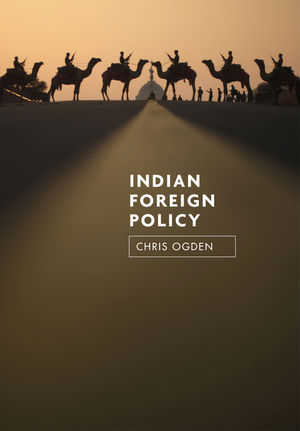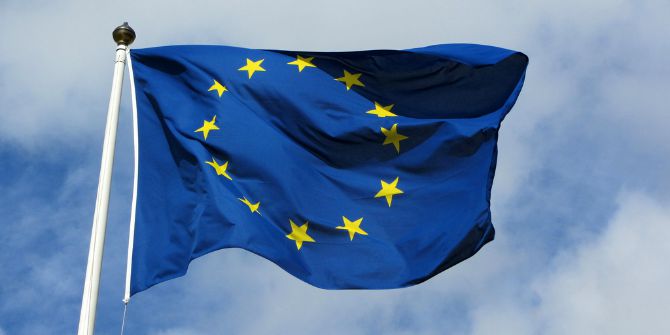Chris Ogden seeks to introduce students to the key dimensions of Indian foreign policy, from its emergence as a modern state in 1947 to the present day. Chapters cover India’s economic transition, relations with the USA, and military strategies. Sagarika Dutt finds that the book offers a good overview of how India’s core principles of progress, peace, development and justice inform its worldview and may help to shape a more equitable world order.
 Indian Foreign Policy. Chris Ogden. Polity Press. 2014.
Indian Foreign Policy. Chris Ogden. Polity Press. 2014.
The purpose of this book is to examine India’s rise to prominence as one of the 21st century’s major Asian and global powers. It describes India as ‘a large post-colonial state keen to embrace a future as a great power’. An examination of the interests and principles that structure its international interactions is, therefore, necessary.
India is also described as a state in transition. It faces ‘serious developmental and existential issues’ such as territorial disputes with Pakistan and China, as well as myriad internal threats and separatist movements, in addition to major modernization problems. On the other hand, India is behaving like a rising power and to consolidate its position is building cooperative and collaborative ties with all the advanced powers.
This book is designed to be used as a text book for University courses but also makes a useful contribution to the burgeoning literature on the subject. One of its key strengths is that it is based on good scholarship and introduces the reader to relevant themes and issues as well as the principal authors and works on Indian foreign policy.
The author outlines four central analytical themes in the introduction to the volume: great-power aspiration; development and modernization; the importance of history and memory; and paradoxes and tensions. The book is divided into eight chapters that discuss crucial aspects of India’s foreign policy. At the end of each chapter there are some questions for discussion and suggestions for further reading. The author is a Lecturer in International Relations at the University of St. Andrews and has published widely on Indian politics and foreign policy.
Chapter 2, ‘Strategic thinking, the military and nuclear affairs’, considers the attitude of India’s foreign policy makers towards the military, the use of force, and the role of nuclear weapons in its international affairs. The chapter includes some references to Indian classical strategic thought elaborated in Kautilya’s Arthashastra (the ancient Sanskrit text on military strategy and economic policy, written around the period 150 BCE—50 CE). It discusses India’s great-power aspiration and argues that its roots can be found in the history of Indian empires, its status as one of the world’s major civilizations, its portrayal as the ‘jewel in the crown’ of the British Raj, and the beliefs of its national elites and leaders such as India’s first Prime Minister, Jawaharlal Nehru. Yet the chapter concludes that India does not appear to have a grand strategy and ‘is yet to publish any comprehensive, all-encompassing national security documents’.

India’s foreign policy behaviour suggests that it is a defensive power. It is currently the world’s largest arms importer, and all its armed forces are undergoing modernization. They have to deal with many different kinds of internal security threats, for example, from insurgent and separatist groupings in the north-east and in Kashmir, as well as threats from neighbouring countries in the border areas. Even its nuclear weapons are meant to be used for defensive purposes. The author argues that India has yet ‘to convert its military might into international political influence’.
Chapter 3, ‘India’s economic transition’, argues that India’s economic policy has evolved from self-reliance (swadeshi) and five year plans with a socialist orientation in the decades after independence to a gradual embrace of globalization and economic liberalization. The author cites Nehru to emphasise the close relationship between foreign policy and economic policy. India introduced some economic reforms in the 1980s but ‘even as late as 1990-91, India was nearly a closed economy’. Various factors led to a balance of payments crisis for India in 1991 and the Indian government had to secure a US$2.2 billion loan from the IMF. Consequently India had to liberalise the economy, introducing economic reforms to reduce state control and integrate India into the global economy. These reforms paid off and led to economic growth. ‘The economy grew at an average rate of 5.7% and 6.9% in the 1990s and 2000s respectively’. With a GDP of US$4.7 trillion in 2012, India became the world’s third-largest economy (behind the US and China). ‘Evidence of economic success being the most fungible and convertible source of power within Indian foreign policy can be found across the full spectrum of its international interaction.’ For example, trade between India and other countries can enhance its political power via commercial diplomacy. A rising GDP also supports India’s rising military power.
The chapter goes on to discuss India’s energy security which is crucial to its continued economic success and points out that by 2045, 50% of India’s energy needs will be met by nuclear power. One of the challenges facing India is reducing social inequality and alleviating poverty. While India’s middle class is growing and relative poverty has declined from afflicting 60% to 20% of the population, it is estimated that 200-300 million people remain in absolute poverty. But the Indian government does not want any foreign aid which does not go well with its great power aspiration, preferring instead to give aid to other states, such as Nepal, Bhutan and Afghanistan. There are many other issues that need to be addressed such as corruption, environmental degradation and poor quality infrastructure. India’s political elites also have to overcome their fear of outsiders. ‘Indian policy makers remain wary of foreign investment, multinational corporations and a globalized economic order, regarding them as threatening Indian independence’, writes Ogden.
The book ends with a final comment on ‘India Emergent’ and the four central analytical themes adopted by the book. Based on the evidence presented in all the chapters the author concludes that India’s profile is most certainly rising in international affairs aided by its interactions with the dominant liberal economic system and the world’s major powers, and ‘an embrace of realpolitik pragmatism in India’s foreign policy approach and thinking’. Moreover, India’s ambitions have been legitimised in the wider international community by Washington’s acceptance of ‘India’s exceptionalism with regard to its nuclear programme’ and recognition of its ‘future economic, militaristic and diplomatic significance in the world order’.
The book has not attempted to engage with the foreign policy analysis literature and does not have many theoretical insights to offer. But it does recognise the importance of normative principles in shaping a new world order. India’s core principles of progress, peace, development and justice inform its worldview and may help to shape a more equitable world order.
Sagarika Dutt is a Senior Lecturer in International Relations at Nottingham Trent University. Read more reviews by Sagarika.








1 Comments